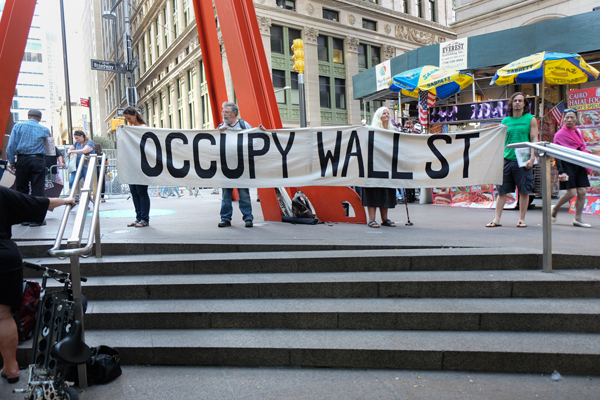
Five years after the Occupy Wall Street protest at Downtown’s Zuccotti Park kicked off a worldwide movement and highlighted the sharp rise in economic inequality, veterans of the two-month sit-in returned to the park for a reunion of sorts.
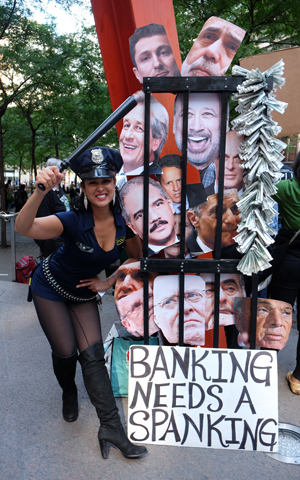
Marni Halasa wants to impose some fiscal discipline on Wall Street.
Five years after the Occupy Wall Street protest spawned a movement and pushed economic inequality into the mainstream political conversation, participants returned to Downtown’s Zuccotti Park on Sept. 17 to recall the protest and renew their call for economic justice.
About 70 people turned out for the sit-in sequel, which included the same sort of costumes and strident signage that featured in the original protest — though, mercifully, no drum circles.
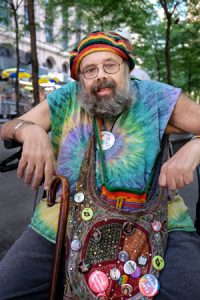
Yippie icon Aron Kay — who raised pie-throwing to a political act in the 1970, famously “pieing” the likes of Sen. Daniel Patrick Moynihan, William F. Buckley, Phyllis Schlafly, G. Gordon Liddy, and Andy Warhol — returned to the park where he dumped a bag of flour on the head of Fox News commentator Geraldo Rivera in 2011.
In addition to waving hand-painted signs with such slogans as “Stop giving blow jobs to big business,” returning protestors shared stories and conducted teach-ins on climate activism, affordable housing, and the Trans-Pacific Partneship.
“I think the Occupy Wall Street spirit is definitely still alive,” said Marni Halasa, a member of the Occupy spin-off the Alternative Banking Group, which continues to meet on a weekly basis, and collaborated on a book called “Occupy Finance.”
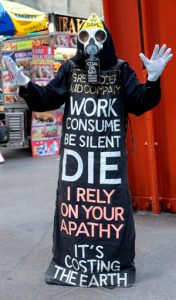
Signs and costumes — at times one in the same — were de rigueur.
She cited more recent social and economic justice movements that she sees as continuations of the original Occupy protest, such as the fight for a $15 minimum wage, the Black Lives Matter movement, and the dark horse candidacy of Sen. Bernie Sanders.
“If it weren’t for Occupy, Bernie Sanders wouldn’t have happened,” she said. “Occupy definitely opened the door for him.”
She credited Sanders — and by implication, the Occupy movement — with dragging the famously centrist Hillary Clinton dramatically to the left, to the point that she now touts a $15 minimum wage (albeit only if states agree), tuition-free college, and steep taxes on the infamous “1 percent.”
“It remains to be seen what she actually does,” Halasa said, “But at least she’s talking about it.”
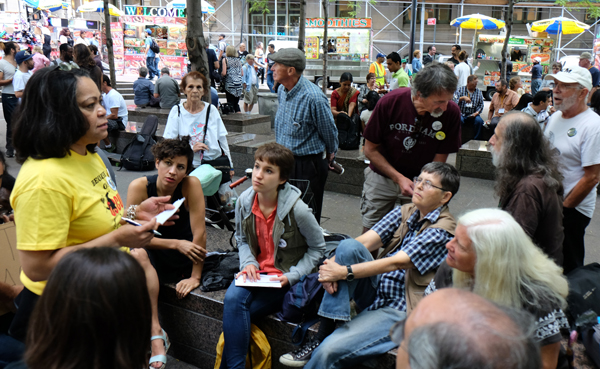
The returning protestors reminisced about the camaraderie of their impromptu village of 2011, and how their movement grabbed the attention of the elites and the “99 percent.”
































